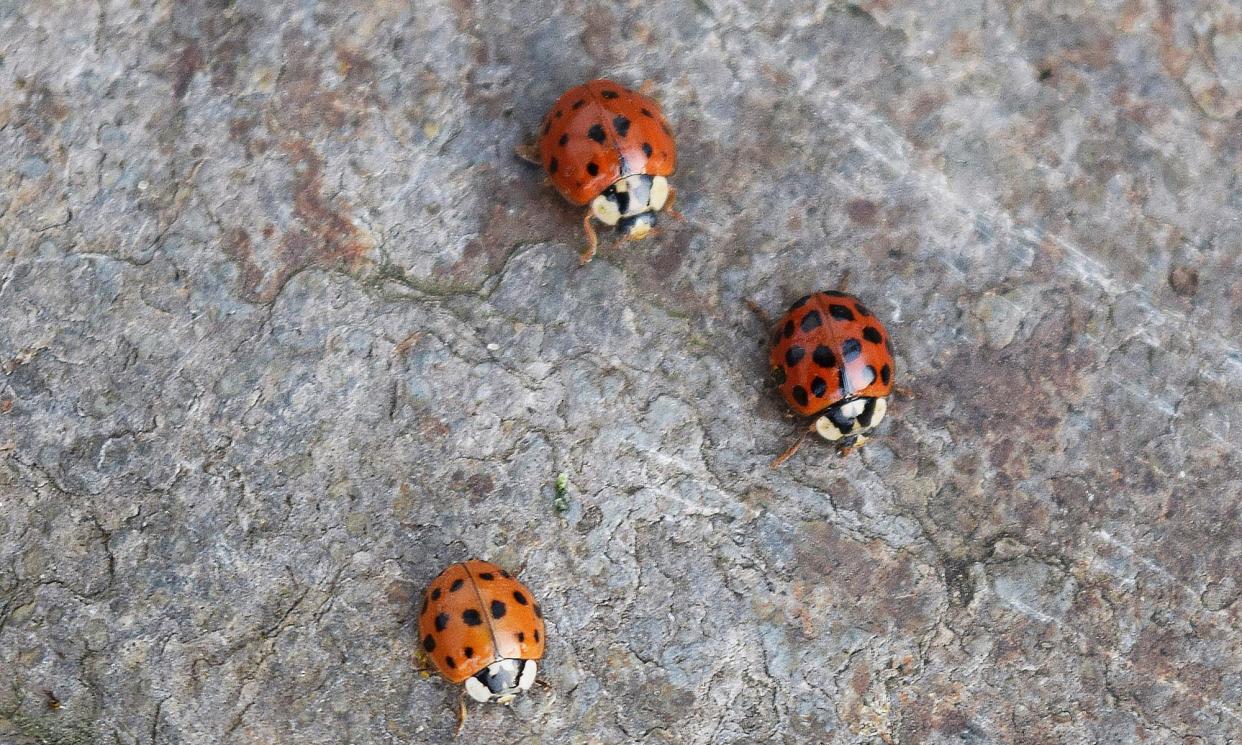Country diary: I’ve become a taxi service for the ladybirds

Ladybird, ladybird, fly away home… Only, it seems they have all flown into mine. Every morning I come across several on the inside of the windows, like droplets of nail varnish motoring around on tiny legs.
These spotty beetles could drive me dotty. Some days I release half a dozen outside, making numerous trips to the back door, cupping them in my palm like dice. And while their joyful polka dot patterns have a nursery school simplicity about them, identifying ladybirds is far from straightforward. The variety of colouring and markings, even among the same species, means that one cannot always rely on simply counting the spots.
Those I have found in my house range from blood orange to light tangerine. The domed backs of some individuals are punctuated with rows of full stops, as if they had got jammed in a printer, while others are entirely free of dark markings. All appear to be harlequin ladybirds, which are known to seek out cosy places in numbers to endure through the colder months. This non-native species originates in Asia and was deployed elsewhere as a biological control because of its appetite for aphids – eventually finding its way to Britain about 20 years ago. It breeds rapidly and may outcompete our native ladybirds for prey or eat their eggs and larvae. As such, this recent arrival is not considered a wholly welcome addition to our fauna.
On the plus side, harlequin ladybirds are attractive, with a pick‑and-mix assortment of designs. They have orangey-brown legs, rather than the typical black, and can also be distinguished from similar UK species by a triangle of white in the centre of the head. The pronotum – the smooth plate behind the eyes – may also be white with a thick black “M”, when viewed from behind.
These rotund invaders must have found their way into my house down a chimney or under a door last autumn, and now spring has arrived it appears they are relying on me to ferry them outside again.
I’m beginning to wonder whether the harlequins are the same ones that keep coming back inside. It’s impossible to know, given the countless combinations of dots. Perhaps it’s about time I started carrying out spot checks.
• Country diary is on Twitter at @gdncountrydiary


